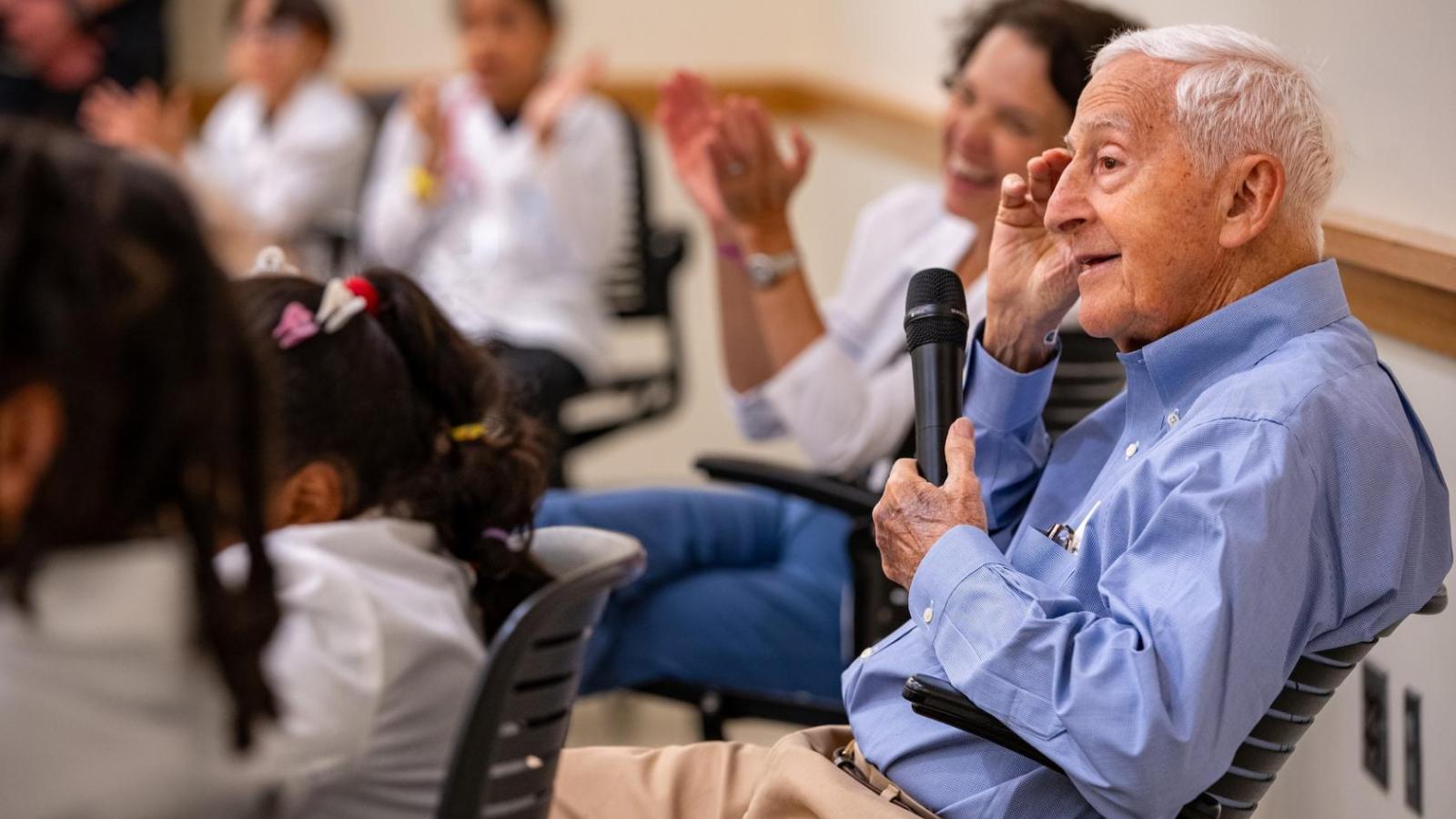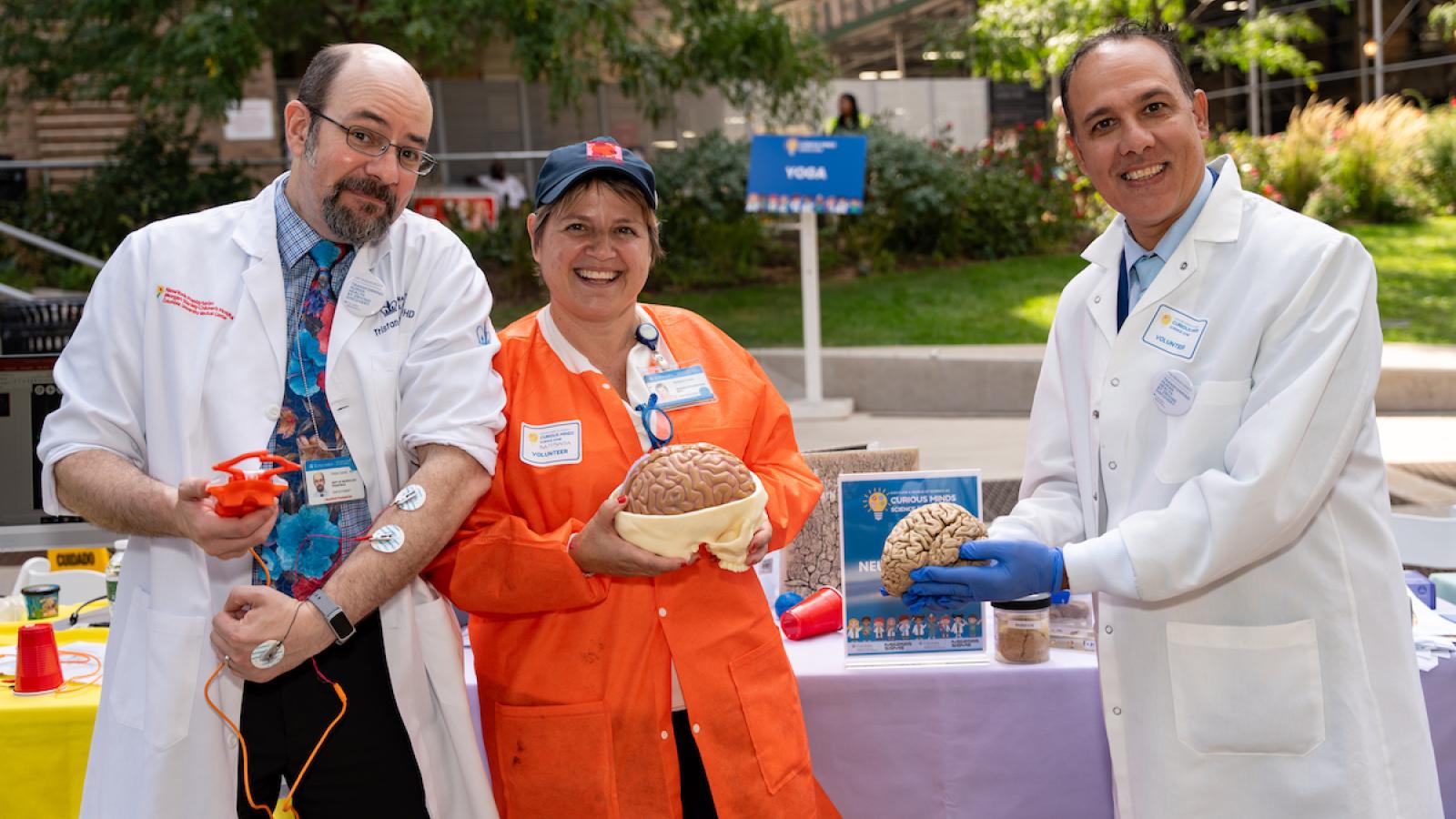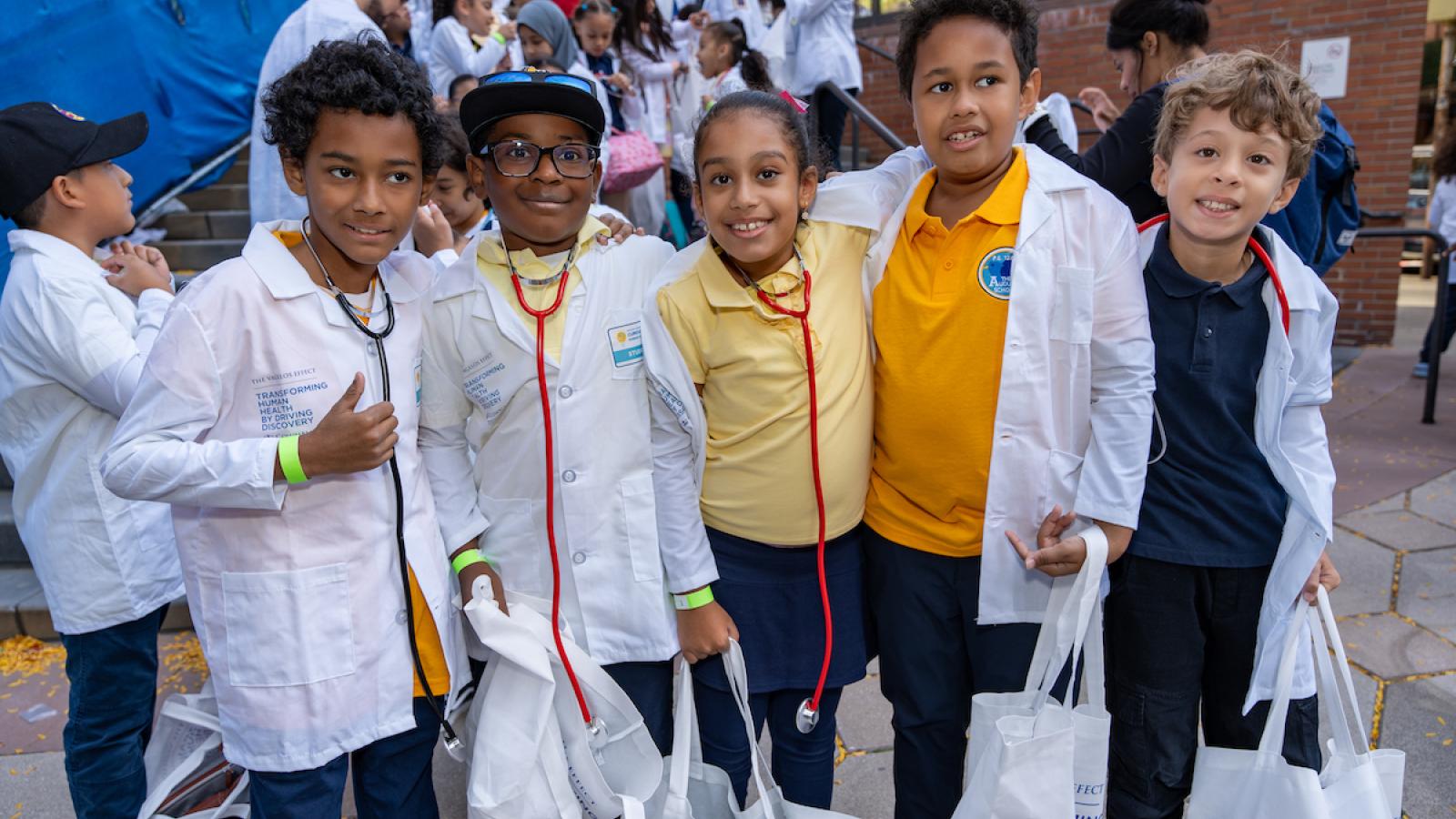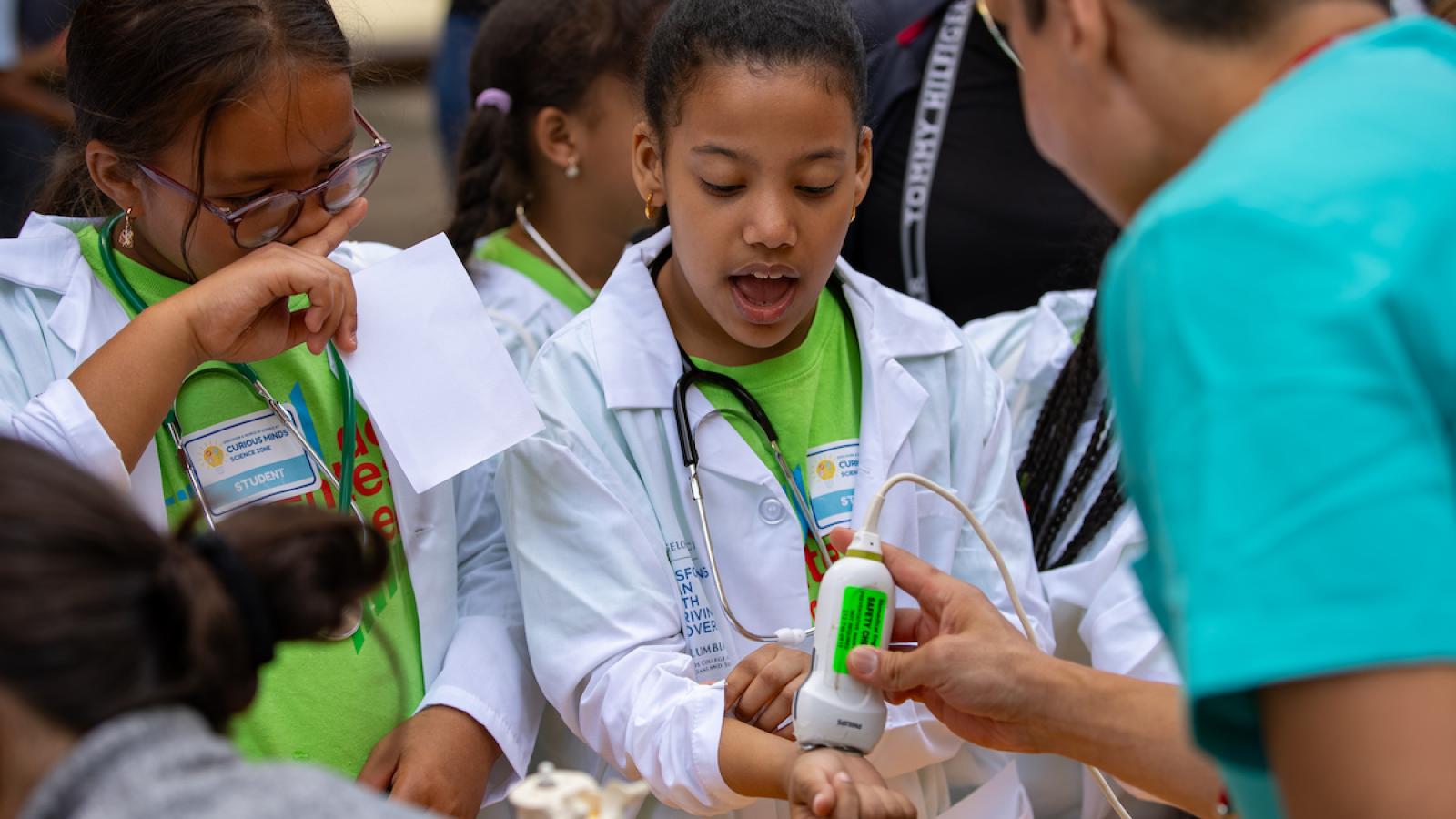
Event on Haven Plaza Taps into Young Students’ Scientific Curiosity
More than 1,280 students from five public elementary schools in Washington Heights filled Haven Plaza at Columbia University Irving Medical Center to learn about science from interactive, hands-on science experiments and to seek information about careers in STEM—science, technology, engineering, and math.
The Sept. 19 event was organized by the VP&S Office of Student Diversity, Inclusion, and Belonging.
The Curious Minds Science Zone featured interactive workshops in the Curiosity Cube, a 22x10-foot mobile science lab from MilliporeSigma, sponsored by the ABC hit show “Abbott Elementary.”
The science fair also featured programming created by Barbara Corneo, director of the stem cell core at Columbia, and Joanna Smeeton, assistant professor of rehabilitation & regenerative medicine, with scientists from the Stem Cell Initiative and the Vagelos College of Physicians and Surgeons. Programming was tailored for elementary school children, such as allowing children to listen to their heart with a stethoscope, test their reflexes with a hammer, make brain caps, and participate in other activities led by medical students, residents, and postdocs at the Vagelos College of Physicians and Surgeons.

Photo by Rudy Diaz/Columbia University Irving Medical Center
Participating elementary students from grades three to six wore white coats to further encourage their interest in careers in health care and science.
Roy Vagelos, a 1954 graduate of VP&S and retired chair of pharmaceutical giant Merck, attended the event to participate in a roundtable discussion with science students, highlighting how a career in science and medicine has the power to make a positive impact on humanity. The Vagelos family’s philanthropy and other forms of support illustrate the family’s commitment to programs that promote science in underrepresented communities.

Photo by Katherine Rojas/Columbia University Irving Medical Center
“The Curious Minds Science Zone marks the first-ever science fair at VP&S designed specifically for children in grades 3 to 6,” says Clara Leon, director of the VP&S Office of Student Diversity, Inclusion and Belonging. “This engaging event aims to ignite children’s natural curiosity by introducing them to the groundbreaking scientific research and discoveries happening at Columbia and allowing the children to explore various scientific fields, ask questions, and deepen their understanding of the world around them.”
Columbia University Interim President Katrina Armstrong, who also is Columbia’s executive vice president for health and biomedical sciences, attended the event.
References
Curious Minds Science Zone was made possible with volunteers and assistance from VP&S Departments of Genetics & Development, Neurology, Orthopedic Surgery, Pediatrics, Rehabilitation & Regenerative Medicine, and Surgery; the College of Dental Medicine; Columbia Stem Cell Initiative; Taub Institute for Research on Alzheimer's Disease and the Aging Brain; CUIMC Facilities Management; CUIMC Office of Academic and Community Partnerships; CUIMC Information Technology; CUIMC Office of Development; Columbia Center for Community Health; Black and Latino Student Organization; First Generation Low Income Partnerships; Asian Pacific American Medical Student Association; and the Lambda Health Alliance.
The Curiosity Cube visits schools, summer camps, parks, festivals, and museums to foster engagement in science and an interest in STEM careers. The cube’s creator, MilliporeSigma, the U.S. and Canada Life Science business of Merck KGaA, Darmstadt, Germany, has partnered with the TV series “Abbott Elementary” to promote the Curiosity Cube. The cube is a solar-powered shipping container that was retrofitted into a mobile science lab to raise awareness of STEM education. The Curiosity Cube tour has made stops in Boston, Houston, Philadelphia, and Washington, D.C.
Top photo by Katherine Rojas/Columbia University Medical Center. Photos in gallery by Rudy Diaz/Columbia University Irving Medical Center.





